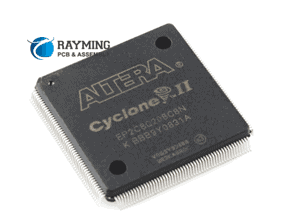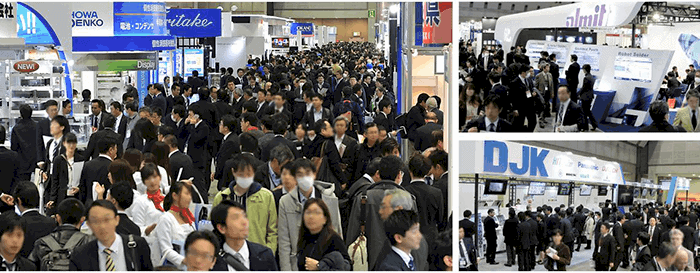Introduction
For companies developing new electronic products, getting working prototypes built and tested quickly is critical to validating designs and accelerating time-to-market. Rapid prototyping allows you to iterate faster, identify issues earlier, and meet compressed development schedules.
Printed circuit board (PCB) assembly is often one of the biggest bottlenecks in the prototyping phase. Finding the right manufacturing partner who can deliver assembled boards in days rather than weeks can significantly speed up development cycles.
This guide covers the benefits and best practices of using rapid prototyping services for PCB assembly. We’ll discuss what rapid prototyping involves, how to implement it in your workflow, and tips for optimizing for fast assembly turnaround.
Overview of Rapid Prototyping PCB Assembly
Rapid prototyping refers to using accelerated manufacturing techniques to quickly build prototypes for testing and design iteration. The goal is to shrink the time between having a design concept and getting functional prototypes to evaluate.
For PCB assembly, rapid prototyping combines:
- Fast bare board fabrication with quick-turn capabilities
- Swift in-house component assembly (SMT, through-hole)
- Prioritized testing such as flying probe or functional test
- Accelerated programming and debugging
- Quick-ship delivery methods
This full workflow allows assembled boards to be delivered in just a few days instead of the standard ~2 week turnaround. While upfront costs are higher, rapid prototyping reduces overall development timeline to help offset greater expenses incurred from longer projects.
Companies across industries from consumer electronics to medical devices leverage rapid prototyping to test concepts faster with physical boards and refine designs quicker through rapid iterations. The ability to accelerate time-to-market for new products also provides a competitive advantage.
Benefits of Rapid Prototyping

Here are some of the key benefits of implementing rapid prototyping PCB assembly:
Faster design validation – Get functional boards in hand quickly to verify your design works and make improvements faster.
Accelerate testing – Start essential testing sooner like thermal performance, compatibility, reliability, and environmental testing.
Earlier feedback – Quickly get feedback by getting prototypes in front of internal stakeholders, external partners, or beta testers for early feedback.
Meet deadlines – Rapid turnaround allows you to meet tight development schedules and launch timelines.
Improve team workflow – Smooth handoff between engineering design and prototyping validation phases.
Reduce costs – Faster development results in cost savings through reduced engineering overheads.
For time-sensitive projects, the premium for rapid prototyping services is often well worth it to achieve a first-mover advantage.
Implementing Rapid Prototyping
Follow these best practices to implement rapid prototyping in your workflow:
Select the right partner – Choose a PCB assembly provider with proven quick-turn capabilities and expertise in low volume prototyping. Local providers reduce shipping time.
Optimize the design – Use only easily sourced parts, maximize spacing, and minimize complexity. Share any assembly notes prominently.
Review the BOM early – Check for long lead items, minimum order quantities, and component packaging types. Have substitutes ready.
Communicate the timeline – Inform your assembler of the required deadline and get their recommendation on process options to achieve it.
Allocate budget – Account for added rapid prototyping costs in the project budget. Weigh costs vs. benefits of different turn time options.
Automate post-assembly test – Script automated testing routines to run once assembled boards are received to accelerate validation.
Plan ahead – Have a plan ready for how to incorporate feedback from the rapid prototyping iteration into the next design revision.
Tips for Optimizing Rapid PCB Assembly Turnaround
Here are some key tips to help minimize the time required for your rapid prototyping PCB assembly order:
Start early – Initiate assembly process as soon as the schematic and layout are finalized to get in queue.
Limit quantity – Start with smallest quantity like 2-5 boards which can be produced quicker.
Choose standard options – Standard FR4, 1.6mm thickness, immersion silver finish, and SMT assembly.
Use an experienced assembler – Their expertise results in higher first pass yield and faster assembly.
Group boards – Having assembler populate multiple small boards together in panels.
Perform selective testing – Prioritize essential tests only to save time.
Expedite shipping – Use FedEx or UPS overnight shipping if needed to reduce transport time.
Have backup components – Alternates for any long lead time or scarce parts to avoid delays.
Assign priority – Instruct PCB assembler to prioritize rush order and provide timeline visibility.
Careful planning and communication with your assembly partner enables meeting the fastest turnaround targets.
Selecting a Rapid Prototyping Assembly Partner

Choosing the right PCB assembly provider is key to successful rapid prototyping. Here are the most important criteria to evaluate potential assemblers:
Proven quick-turn capabilities – Look for turnaround options ranging from 3 days up to 2 weeks. Ask for examples of past rush orders they’ve completed.
Experience with prototyping – An assembler experienced with low volume and prototype orders will have processes tailored for fast WIP turnover.
Wide range of in-house services – The more services offered in-house, the quicker the overall assembly and test process.
Flexible and scalable – Ability to take on rush orders flexibly across small batches is vital. Inquire about their ability to surge.
Quality processes – Despite the rush, quality standards should not be compromised through robust assembly and inspection protocols.
Responsive communication – Your assembler must provide ongoing order status updates and quick issue resolution.
Guideline adherence – Ask about design, fabrication, and assembly standards followed. IPC standards are ideal.
Location – Domestic assemblers reduce shipping time. Some have multiple locations to shift production between.
Cost – Compare rapid prototyping pricing models. Some charge rush fees while others bake into base costs.
Thoroughly evaluate assemblers across these criteria before selecting the right partner for your rapid prototyping needs.
Key Considerations for Designers
For electrical engineers designing boards destined for rapid prototyping, following designer guidelines can optimize the layout for fast assembly:
- Avoid tiny chip packages like 01005 size
- Maximize spacing around QFN packages and between traces
- Reduce unnecessary cutouts in ground planes
- Include test points for accelerated validation
- Minimize BGA packages which slow inspection
- Specify any special assembly instructions clearly on fab drawing
- Only use well-stocked, non-obsolete component choices
Taking some time upfront while designing to design for manufacturability (DFM) using these tips will ensure your board can be rapidly assembled without issues.
Conclusion
Rapid prototyping techniques provide a valuable tool for engineers and companies in fast-paced, competitive industries to accelerate product development and achieve a first-mover advantage.
By using PCB assemblers capable of quick-turn production, you can get prototypes built and tested in a fraction of standard assembly timeframes. This enables validating designs faster, iterating quicker, and reducing costs.
Careful planning and choosing the right rapid prototyping partner are key. Weigh the trade-offs between cost and project timeline to determine the optimal pace for your needs. Taking steps to optimize the design and assembly process further speeds up the process.
With the right approach, rapid prototyping PCB assembly enables bringing innovative products from concept to fruition faster.
FAQs
What is the typical cost premium for rapid vs. standard prototyping?
The premium can range widely based on quantity and complexity. As a rough estimate, rapid prototyping may cost 2-4X standard prices due to rush fees, expedited shipping, potential yield loss, etc.
What is the fastest turnaround time possible?
For simple boards with common components, some assemblers can deliver in as little as 24-48 hours. 3-5 days is more common for fully tested boards.
Should every prototype board be rapidly assembled?
Not necessarily – rapid prototyping is ideal where you need to validate and test key functions quickly. Standard ~2 week turnaround is fine for less urgent iteration.
What are some key parts to avoid for rapid assembly?
Avoid tiny components requiring fine pitch assembly, large FPGAs, QFNs/BGAs without defined inspection points, odd chip package sizes, and long lead time parts.
Can boards be rapidly assembled individually or is there a minimum?
Some assemblers will rapidly assemble single boards on request. Small minimums like 2-5 boards are common. Batching maximizes throughput.



0 Comments